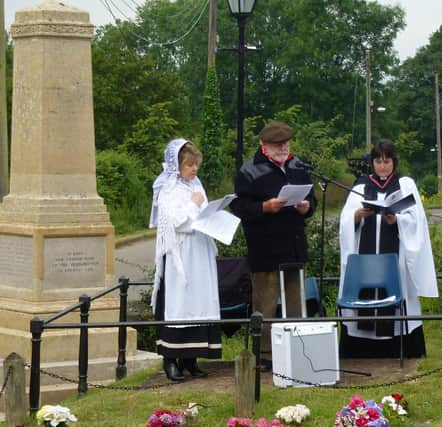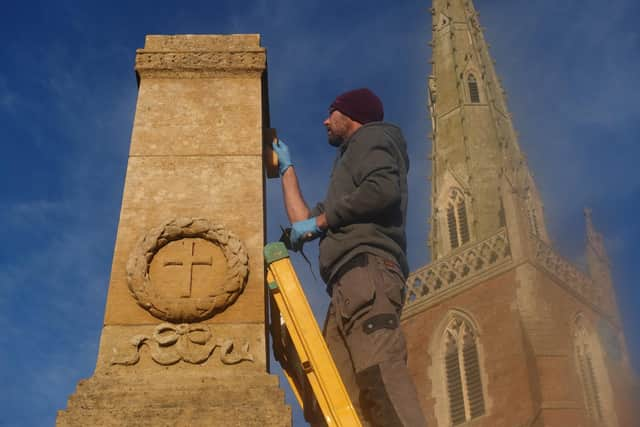Makeover for war memorial in time for Remembrance thanks to Braunston Marina


A war memorial built around 1922 to commemorate the 31 Braunston villages who did not return from World War One has been given a much-needed makeover.
The refurbishment was made possible thanks to sponsorship from Braunston Marina.
Advertisement
Hide AdAdvertisement
Hide AdThe first was a major restoration in the summer of 2014 in the build up to the centenary of WW1 - also sponsored by Braunston Marina.


A special service was held just before the Braunston Historic Narrowboat Rally in June that year, presided over by the then Rev Sarah Brown, now Dean of Hereford Cathedral.
Accompanying her were celebrity canal enthusiasts Prunella Scales and Timothy West who performed various readings including a recital of the names of the war-dead, including their ages and where they fell.
Tom Coghlan, director of Braunston Marina, said: “The memorial was now beginning to look very grubby, and had indeed reentered the War Memorials Trust’s list of war memorials at risk. This recent restoration was on a modest scale - largely a clean-up of the stonework by local stone mason specialists Boden & Ward of Flore, with judicious repointing from their highly skilled stonemason Steve Hancock.
Advertisement
Hide AdAdvertisement
Hide Ad"The icing on the cake was the repainting the lead-lettering to the memorial, now largely indecipherable on the south and west facing sides.”
Tim said World War One affected Great Britain in a way that no war had done since the Norman Conquest of 1066.
"By the time it had ended in 1918, hardly any community – town, village or rural - had not been involved in it, and suffered the loss of some of its men,” he went on.
"We now don’t know how many serving men returned to Braunston, severely wounded or mentally scarred by having seen the horrors of it. In the case of the canal and farming village of Braunston, of the 31 men who died, we know that 19 of them did so as soldiers in France and Belgium. Two more died in the Salonika, northern Greece, one in Syria, and one in Mesopotamia, in what is today Iraq. Two died
Advertisement
Hide AdAdvertisement
Hide Adserving at sea with the Royal Navy. There were in addition six whom we have been unable to trace in terms of their service record. So these men of Braunston served and died on many fronts.”
The men were for the most part simple country folk, who would have previously known nothing of war nor understood the cause for which they were now fighting – farm labourers, a farrier, a domestic groom, a cowman and a postman, amongst others.
Tim said: “Nine of them were, or could well have been boatmen, with little if any education, attracted no doubt by the prospect of adventure and the higher wages offered by the King’s Shilling.
The marina director, who is co-author with Jenny Coy of the booklet ‘Braunston’s Roll of Honour in World War 1’ said: “We are proud to play our part in looking after Braunston’s war memorial and in so doing, honouring the men who gave their lives for the freedom we enjoy today.”
